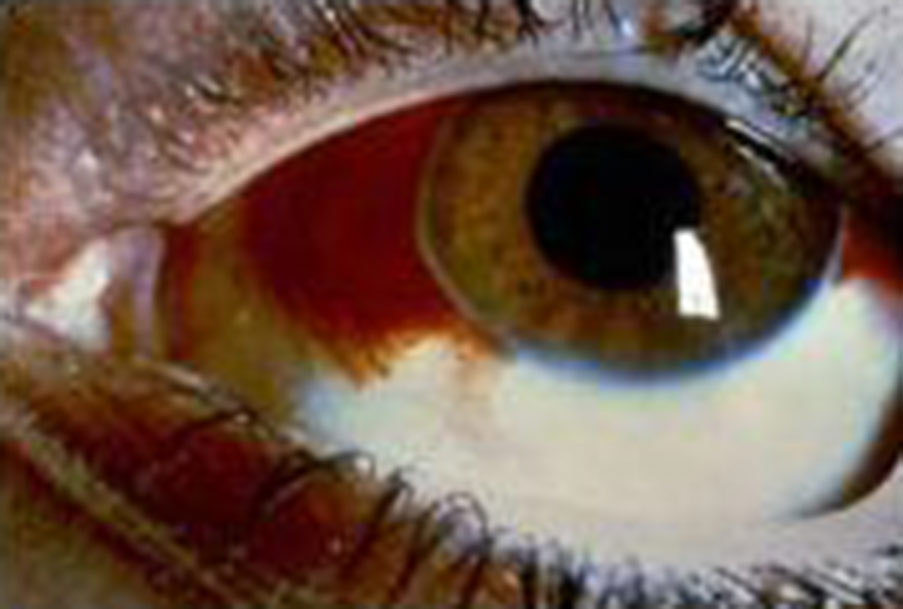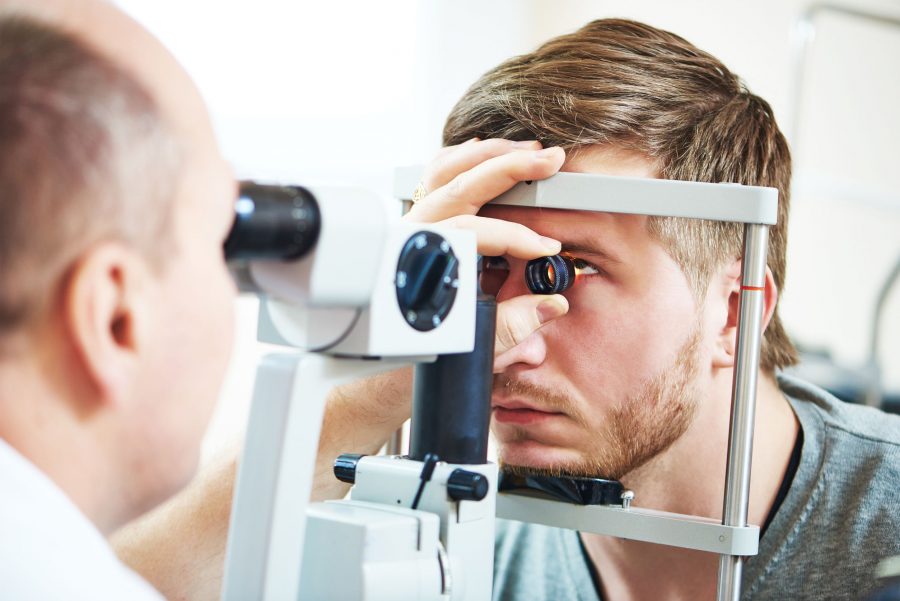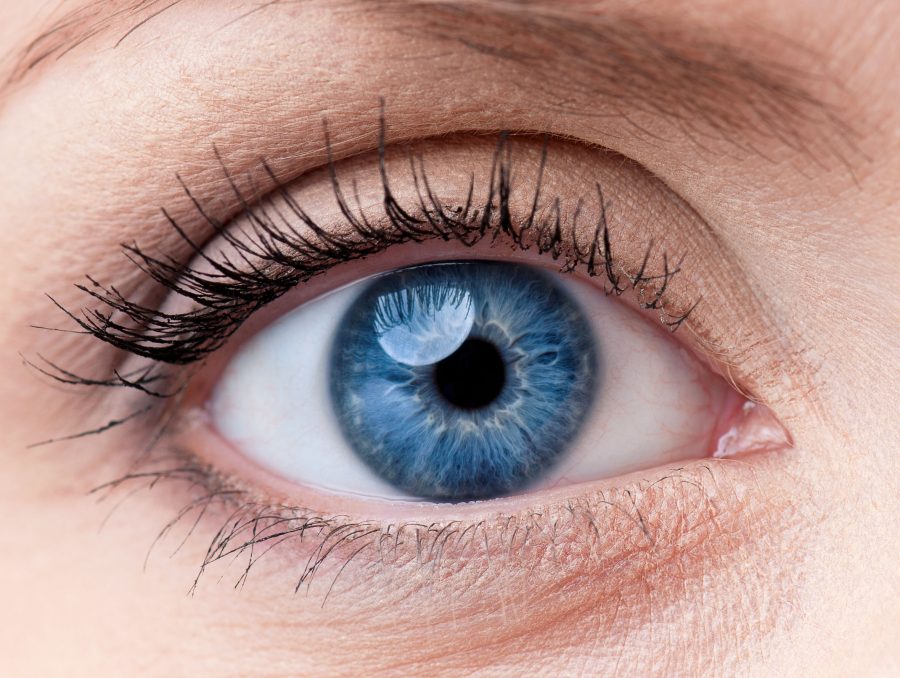If you see a bright red spot in the white of your eye, you may have a subconjunctival hemorrhage.
The conjunctiva–the transparent membrane that covers the surface of the eye and lines the inner eyelids–contains many small blood vessels or capillaries. When the blood vessels break open and bleed within the conjunctiva, the blood can pool, causing a prominent red blemish to appear on the white of the eye (called the sclera). Such a spot is called a subconjunctival hemorrhage.
Although a subconjunctival hemorrhage can be highly visible and alarming in appearance, it is actually a minor and temporary discoloration. Common and almost always harmless, a subconjunctival hemorrhage1 will typically heal on its own within about a week or two.
Not all red spots are innocuous, however. If you experience persistent redness, discharge and any disruption in vision, you should immediately contact the eye experts at Beach Eye Medical Group in Huntington Beach, Orange County for a comprehensive evaluation. Our experienced eye doctors will be able to rule out a more serious condition such as a bacterial or viral infection or the onset of glaucoma, a progressive eye condition that affects the optic nerve and can lead to blindness.
A subconjunctival hemorrhage is usually benign and does not affect your vision, nor does it cause any painful symptoms. In fact, in terms of physical sensation, you may not even be aware that you have had any bleeding. If you have a subconjunctival hemorrhage you may notice:

Anyone can develop a subconjunctival hemorrhage. Similar to a bruise, a subconjunctival hemorrhage is simply an indication that a discharge of blood has occurred below the surface tissue. It is not always possible to point to a clear inducement of the hemorrhaging. Some of the most common causes of ruptured blood eye vessels2 include:
Subconjunctival hemorrhages may also be related to the following conditions:
It is not uncommon to see subconjunctival hemorrhages in newborn babies. During the process of childbirth, an infant experiences a change in pressure in the body, which can cause the type of strain that is associated with subconjunctival hemorrhages.

To diagnose a subconjunctival hemorrhage, an eye doctor at Beach Eye Medical Group in Huntington Beach, Orange County will perform a clinical examination of your eye and review your overall health history. Your blood pressure will likely be taken and additional diagnostic blood tests may be ordered to rule out a more serious problem–particularly if you have bleeding or bruising in other areas of your body.
A subconjunctival hemorrhage may be of greater concern in elderly patients, whose capillary rupture and bleeding may be a sign of a vascular disorder.
Treatment of a subconjunctival hemorrhage is typically not necessary. In general, the blood spot usually resolves itself within a few days to a few weeks, depending on the size of the blood spot. Although the subconjunctival hemorrhage may change in color as the blood is reabsorbed, the patch will eventually dissipate, leaving no visible trace. Complications arising from a subconjunctival hemorrhage are extremely rare.
To help your eye heal, you should not touch or otherwise aggravating your eye. Your eye doctor at Beach Eye Medical Group may advise you to discontinue the use of blood-thinning medication until you no longer show signs of subconjunctival hemorrhage. If your eye is irritated, you can use soothing over-the-counter artificial tears to relieve any discomfort.
There is no known way to prevent a subconjunctival hemorrhage from occurring. In general, you should avoid irritating the eyes and minimize overly strenuous activities that can increase blood pressure. If you have a tendency to develop subconjunctival hemorrhages, you should monitor your blood pressure and consult your doctor.

References
1 What is a Subconjunctival Hemorrhage? Available: https://www.aao.org/eye-health/diseases/what-is-subconjunctival-hemorrhage
2 Subconjunctival hemorrhage (broken blood vessel in eye). Available: https://www.mayoclinic.org/diseases-conditions/subconjunctival-hemorrhage/symptoms-causes/syc-20353826
3 Laser eye surgery and lens surgery. Available: https://www.nhs.uk/tests-and-treatments/laser-eye-surgery-and-lens-surgery/
Can't say enough about this office and their wonderful staff. Dr McCluskey is one of the top doctors in Orange county.